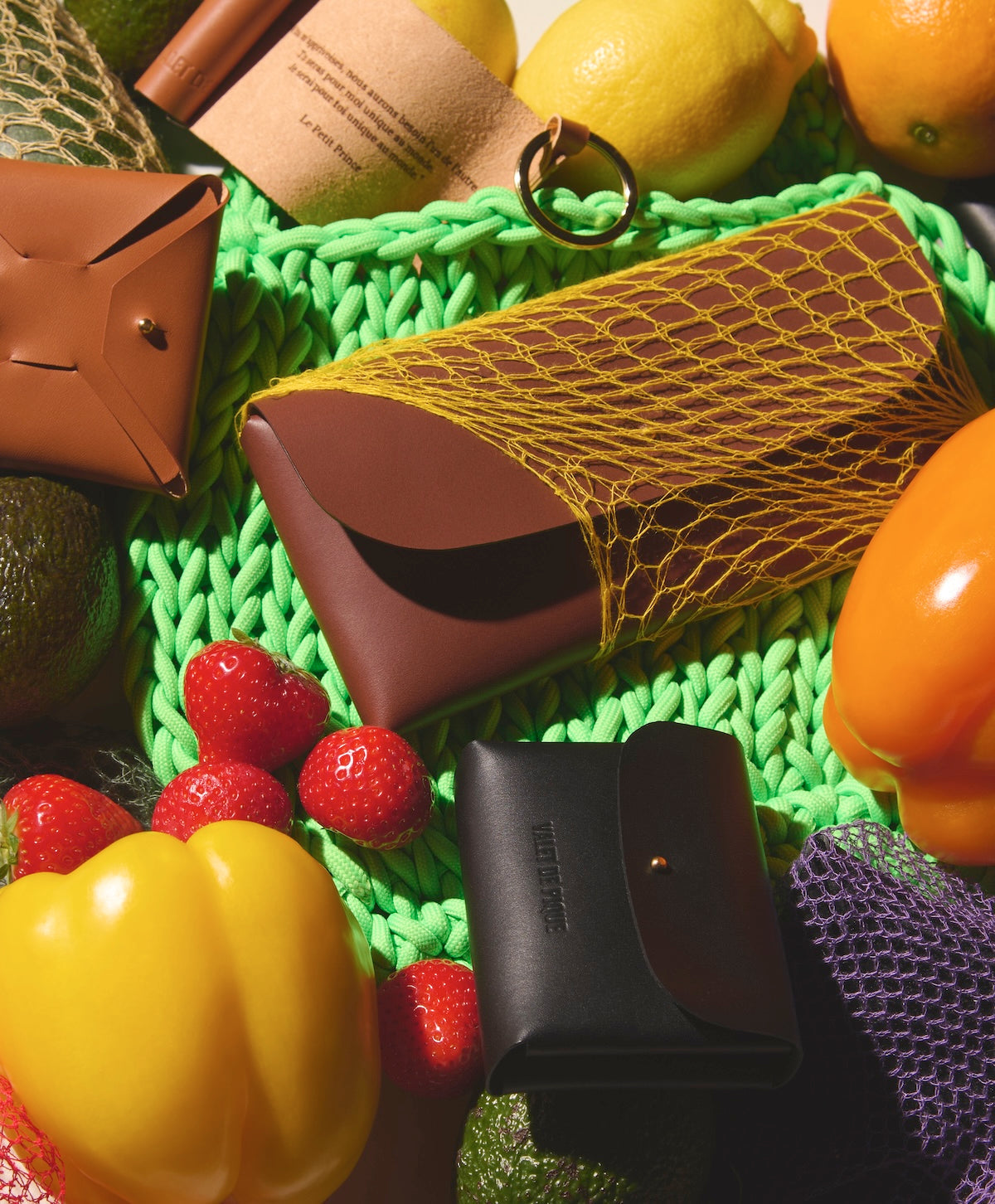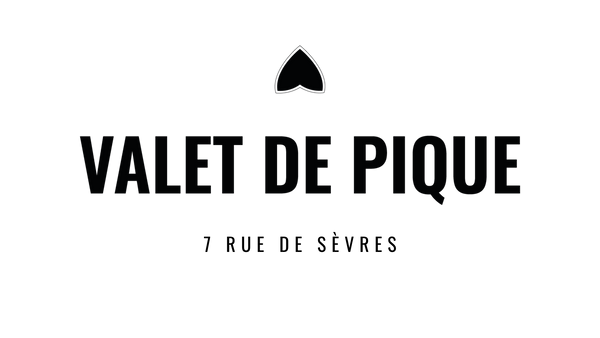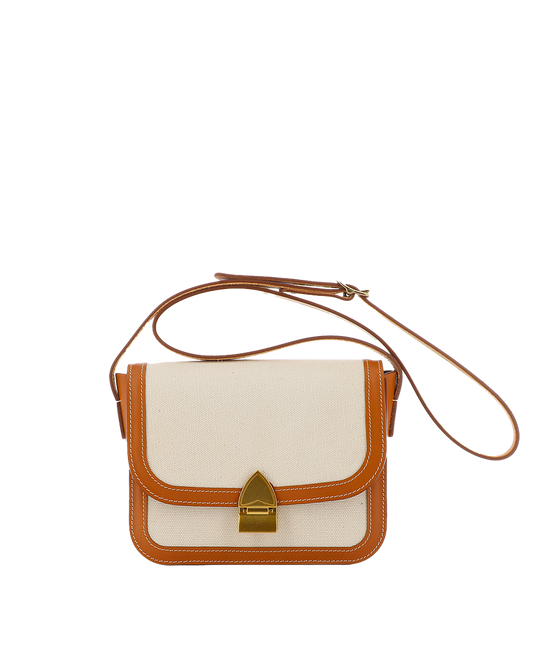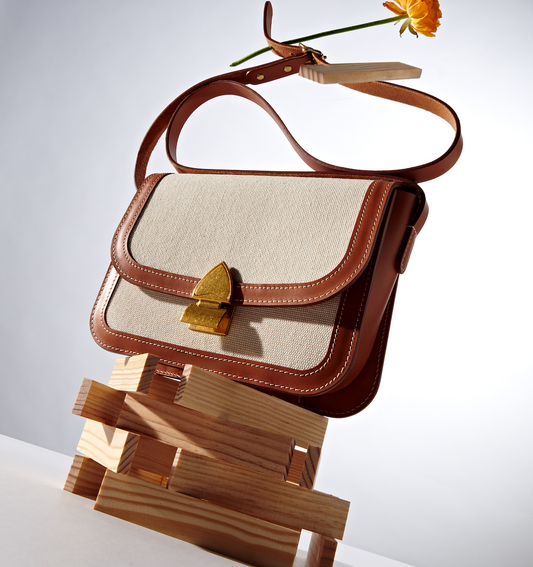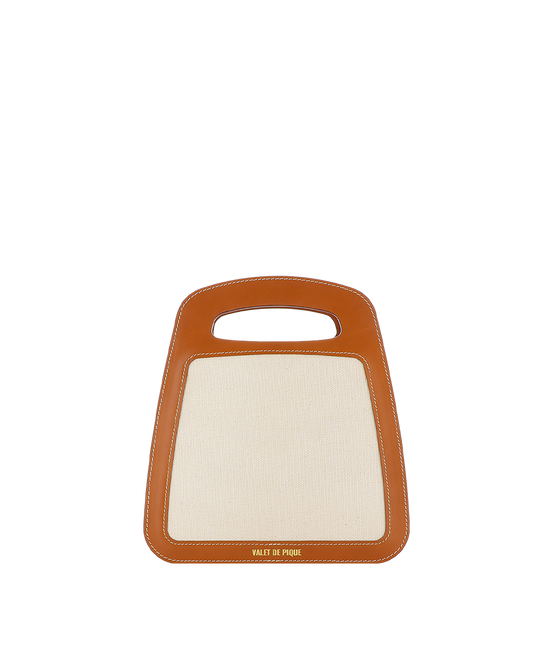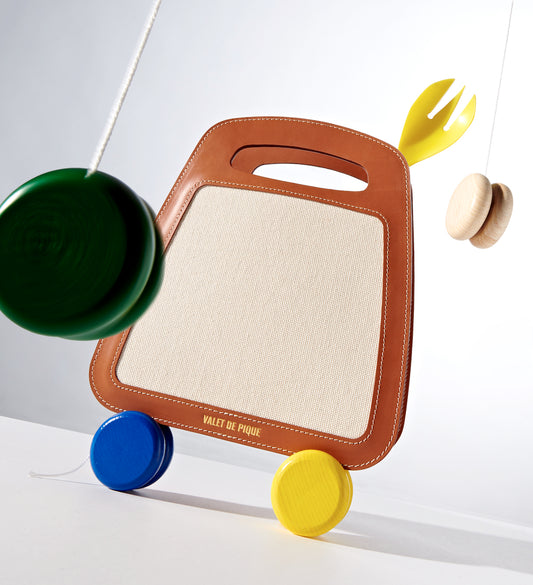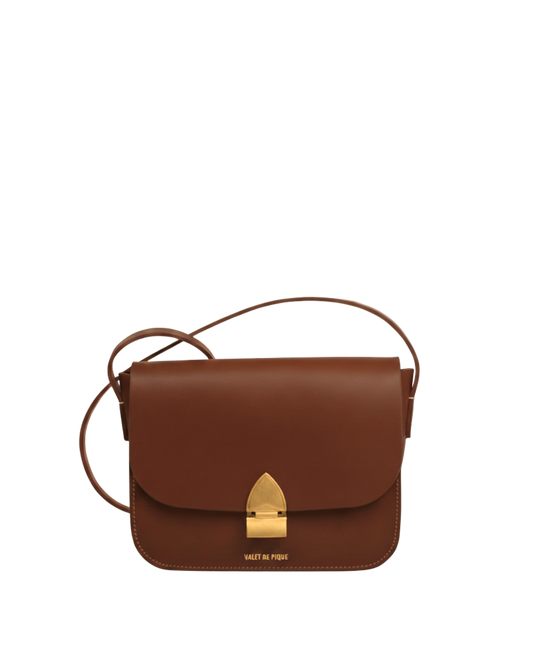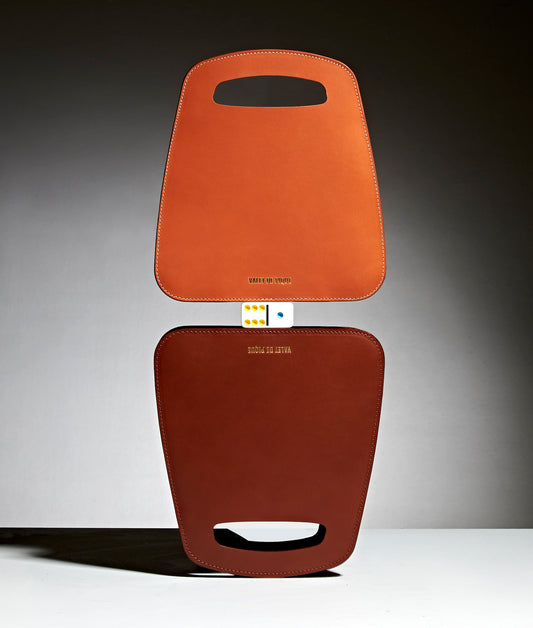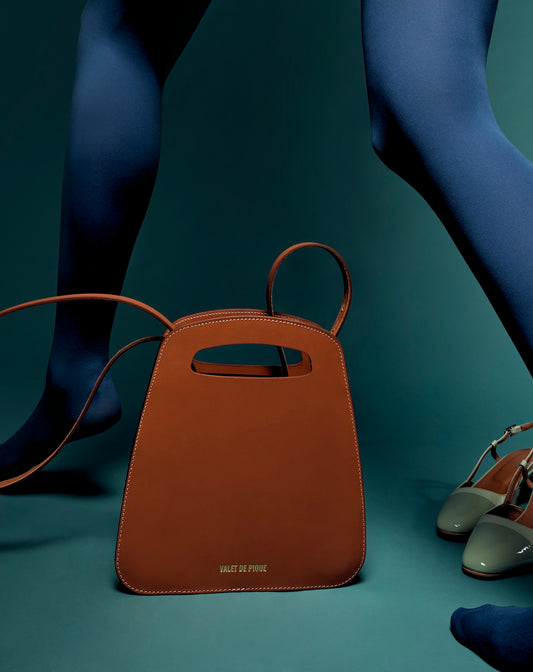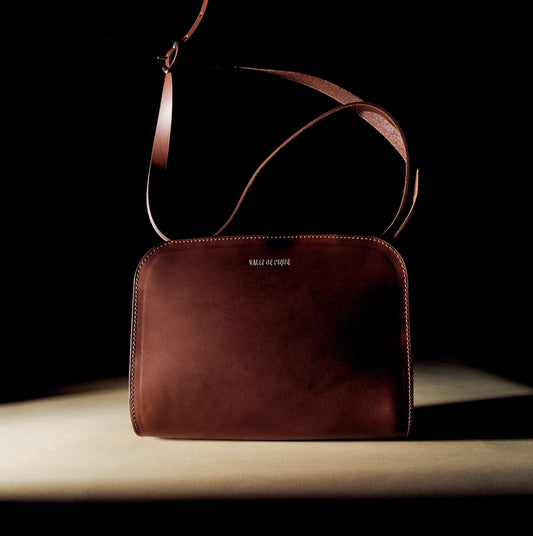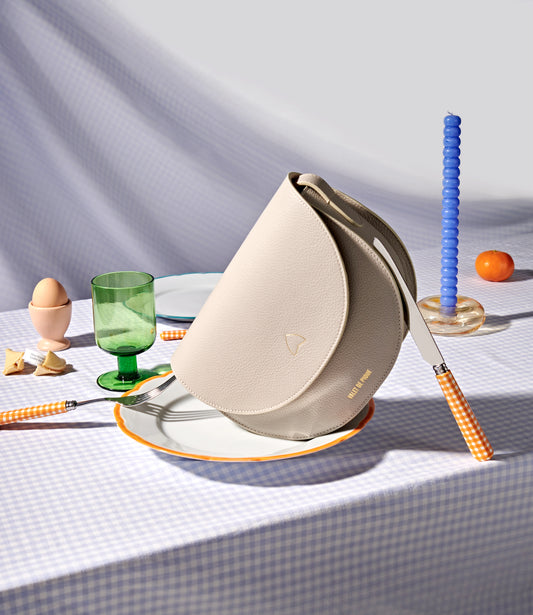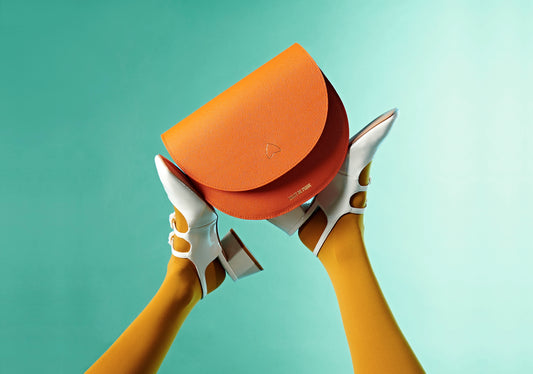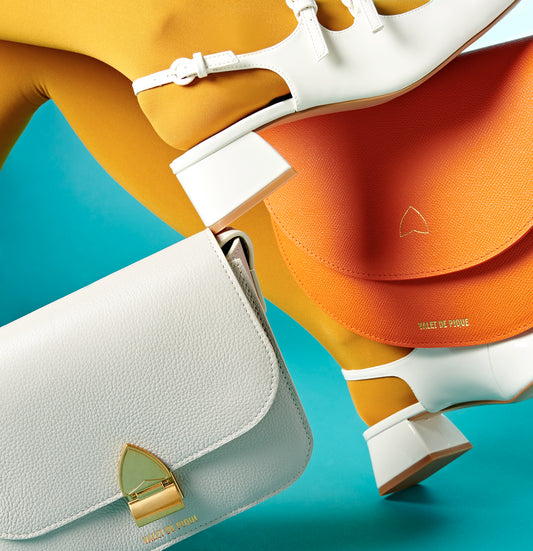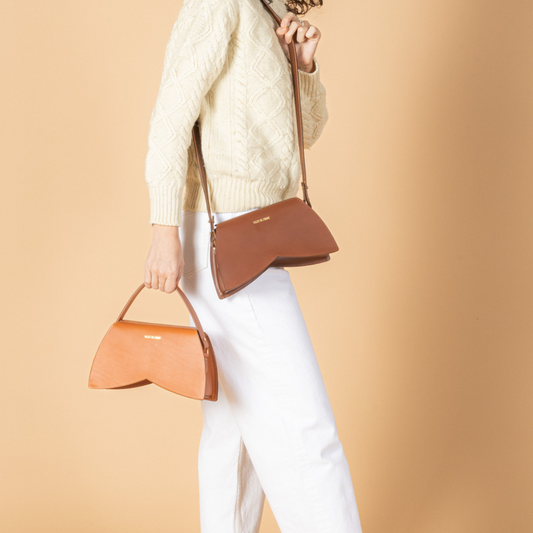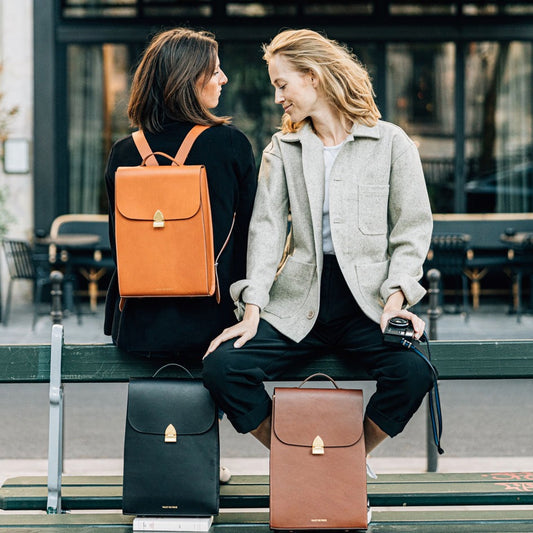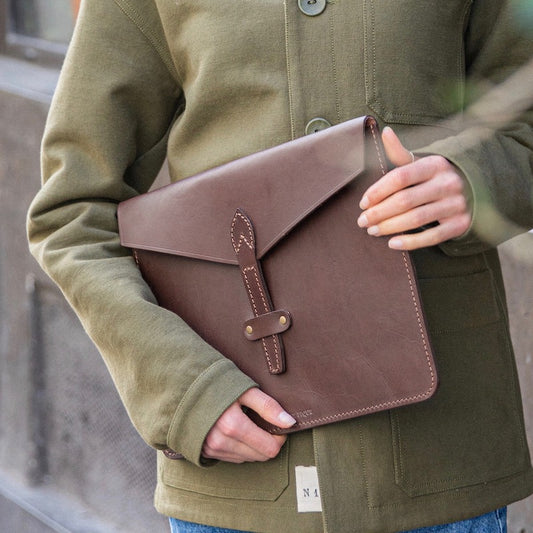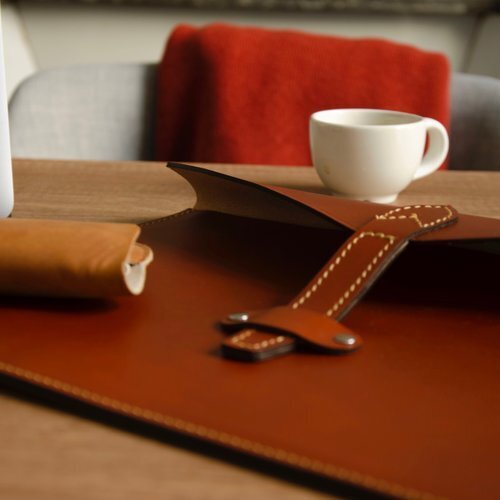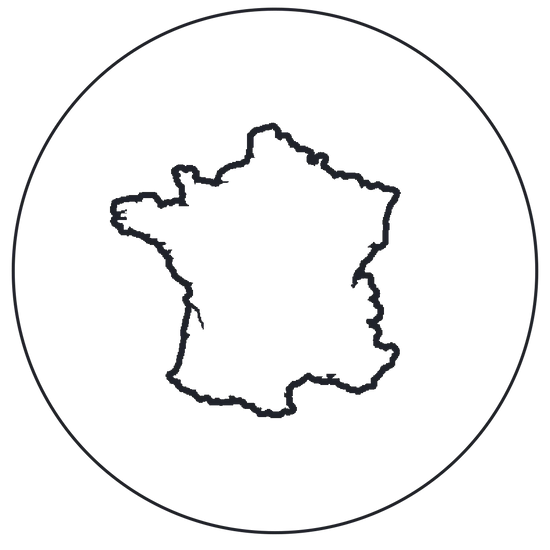Introduction: March 2019, in our workshop in the 11th arrondissement. A customer walks in with an old, torn military backpack. "Could you make me one like that, but in French leather?" This simple question would become an obsession that would keep me up for six months. Because creating a backpack in handcrafted French leather isn't just sewing straps onto a rectangle. It's solving an equation with 17 unknowns. Let me tell you about it.
1. The Problem No One Wants to Admit
Let me be frank with you: most leather backpacks on the market are either too beautiful to be practical, or too practical to be beautiful. On one hand, you have the luxury models costing €2,000 that look like sculptures—magnificent in a shop window, but try fitting a 15-inch laptop and three folders in one. On the other hand, you have the functional bags, often made in Asia with chemically treated leather, that do the job but end up in the closet as soon as you have a client meeting.
When I started working on our first prototype of a French leather backpack , I was convinced that all we had to do was adapt our saddlery techniques. After all, at Valet de Pique , we've been making bags since day one. A backpack is just... a bag with straps, right?
How naive I was.
2. The Investigation: What Makes a Backpack Truly Handmade
Leather is not your ally (at first)
The first shock: full-grain leather, this noble material we love to work with, weighs approximately 900 grams per square meter for a thickness of 2.2 mm. A classic backpack requires about 1.8 square meters of leather. Do the math: 1.6 kg before even adding the linings, zippers, and hardware. It was nearly 2.3 kg empty. Might as well carry a sack of potatoes.
Our craftsman in Tours (the workshop that usually works for major luxury brands) looked at me with a sly smile: "Martin, do you want to make a backpack or a medieval suit of armor?"
He was right. Everything needed to be rethought.
The unexpected solution: the strategic cut
We spent three weeks mapping every area of the bag. Where did we really need extra thickness? The stress points, obviously: the shoulder strap attachments, the bottom of the bag, the side seams. But what about the back of the bag? The top flap? We could go down to 1.8mm, or even 1.5mm in some areas.
This technique is called "selective splitting." It's a skill our artisans have mastered for generations in the handcrafted production of leather goods : the leather is thinned where it doesn't need to be thick. The result: the weight has been reduced from 2.3 kg to 1.4 kg. Still sturdy, but finally portable.
3. The 17 Gestures That Make a Difference

Want to know why a truly handcrafted backpack costs between €450 and €650? Because behind it lie 17 manufacturing steps that no industrial machine can faithfully reproduce. I'll detail a few of them that make all the difference:
Choosing the leather (2 hours per bag)
Our artisans examine each hide in natural light. We look for a regular grain, the absence of scars on visible areas, and consistent suppleness. For a single backpack, we select from three to four different hides to achieve perfect harmony. This leather comes exclusively from French tanneries, primarily in the Annonay region, where the expertise dates back to the 17th century.
Hand-cutting (1 hour 30 minutes)
Unlike the laser cutting used in industry, our artisans cut each piece by hand using a guillotine or a die-cutting press. Why? Because they adapt the cut to the specific characteristics of each leather. If there's a thinner area on the left, they'll slightly adjust the cutting angle to compensate. This is what makes each of our bags unique.
The tinted edge (45 minutes)
This is THE signature of our saddlery approach. Instead of folding the leather and hiding the edges (as 90% of brands do), we leave the leather with a raw edge and hand-dye the edge, layer by layer. A minimum of seven coats of vegetable dye, allowing each coat to dry completely before applying the next. Then we polish it with deer bone. The result? Impeccable edges that will never warp, because the leather naturally "breathes."
Hand saddle stitching (3 to 4 hours)
For the straps and strategic points, we use saddle stitching: two needles, waxed thread, and we go through each hole in both directions. It's three times longer than machine stitching, but it's also three times stronger. If one stitch breaks, the others hold. With machine stitching, everything falls apart.
4. The Test I Should Never Have Taken
May 2019. The first prototype is finished. In a moment of overconfidence, I decide to test it "in real-world conditions": a weekend in Barcelona with 8 kg of photo equipment, a computer, and clothes. In short, I loaded it up like a pack mule.
The result: after two days, one of the straps started to come loose. Not because of the stitching (which held), but because of the leather attachment that connected the strap to the body of the bag. It simply wasn't reinforced enough.
Back to the workshop. We added a reinforced piece of double-layered leather, attached with rivets and stitching. Additional weight: 40 grams. Strength multiplied by four. Since then, I've had the same bag, using it daily for four years. It has developed a beautiful patina and is sturdier than the day I bought it.
5. Made in France: What It Really Changes
Let's be honest: manufacturing in France is more expensive. A skilled leather craftsman earns between €2,500 and €3,500 per month, compared to €300 to €500 in some Asian countries. Vegetable-tanned French leather costs €18 per square foot, compared to €4 to €6 for imported chemically tanned leather.
But here's what we gain in return:
- Full traceability : I can tell you exactly which leather was used for your bag, which tannery it came from, and which craftsman made it. We keep a log for each piece.
- Repairability : A worn strap? We replace it. Our workshops keep the patterns for each model.
- The environmental impact : No maritime transport (2 tonnes of CO2 per container), no hexavalent chromium in tanning, and leather scraps recycled by a French company that transforms them into acoustic insulation.
- Preserving the know-how : Each bag we sell allows a French craftsman to make a living from his trade, and to pass on his know-how to an apprentice.
6. The Compromises We Refused to Make
In developing this backpack, I received every possible "pragmatic" piece of advice:
"Why don't you have it manufactured in Portugal? It's cheaper and it's still European." Because our identity is French know-how, the kind we encountered in 2018 in this workshop in the 11th arrondissement. The kind we want to preserve.
"You could use Italian leather, it's cheaper." French leather, especially that tanned in Annonay, has a specific suppleness and resistance due to vegetable tanning techniques used for four centuries. We don't want to change that.
"Customers won't see the difference between machine stitching and saddle stitching." Maybe not on the first day. But after three years of heavy use? The difference will be striking. And that's when they'll understand why they invested in a bag made to last .
7. What You Need to Know Before You Buy
A handcrafted French leather backpack isn't for everyone. Here's what you need to accept:
He's going to skate
Natural full-grain leather changes over time. It will darken slightly, develop nuances, and bear the marks of your movements. This isn't a flaw; it's its nature. If you want something that will stay the same for 10 years, choose synthetic leather.
It needs maintenance
Twice a year, a coat of leather conditioner . That's all. But these 15 minutes are necessary to keep the leather supple and durable.
It costs more to buy
Between €450 and €650 depending on the finish. But over 10 years (realistic lifespan with maintenance), that works out to €45 to €65 per year. A mass-produced bag costing €150 that you replace every 2 years costs you €75 per year. Not to mention the environmental impact.
He has character
With its thick leather, visible stitching, and clean edges, a French handcrafted bag has a presence. It's not discreet. If you're looking for something invisible, look elsewhere.
What I Learned in 6 Months
Creating a French handcrafted leather backpack means accepting that you might make mistakes, start over, and listen to those with 40 years of experience. It also means saying no to shortcuts and compromises that might lower the price by €100 but betray the very reason you started.
That customer who brought me his old military bag? He came back 8 months later. We made him a custom-made bag. He's been using it every day since 2020. The last time I ran into him on Rue de Sèvres, he told me: "You know, Martin, I thought it was just a bag. But actually, it's become a companion."
That's exactly what we aim to create at Valet de Pique: not products, but companions. Pieces that age with you, that tell your story, that improve with time.
Because ultimately, French craftsmanship isn't about nostalgia or folklore. It's a conscious choice: quality over quantity, durability over disposable goods, and human skill over machinery.
To Go Further
If you'd like to discover our approach to French leather goods and saddlery, I invite you to visit our boutique on Rue de Sèvres in Paris, or explore our online collection . Each piece has its own story, and we'd be delighted to share it with you.
And if you're still unsure about choosing a handcrafted bag, read our article on how to recognize a genuine handmade leather bag . You'll understand why not all bags are created equal.
— Martin, founder of Valet de Pique
P.S.: This month, we're working on a new roll-top backpack design. If you'd like to follow its creation behind the scenes, sign up for our newsletter. I share failures as much as successes. Because that's how we truly learn.
